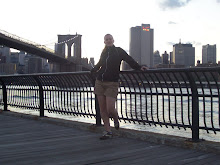In the New York Times I found an article by Holland Cotter who remembers about his two favorite museums during his youth. He revisits the Museum of Fine Art of Boston and the Isabella Stewart Gardener Museum of Boston both favorite museums to visit in his youth. In his article, Time-Traveling with the Muses in Boston: On the Fenway, a Habitués Secret Map Uncovers a universe you can Inhabit, he compares the past museums that he knew in his youth to the updated versions of these museums. The two museums are vastly different but both have changed with the times while keeping the museums the same as they were when Holland was a youth.
Holland was first attracted to the museums thought his family and through the Egyptian art in the Museum of Fine Art. By visiting the museum regularly he was able to explore all of the exhibits thoroughly. This museum was a playground where he could spend days observing the art that was on display. He was able learn from the museum “taught me what perspective was. And it taught me what art and specifically painting, was or could be: an embodiment of order, a universe that you could, just through looking, move into and inhabit, where you could set up a life, live and ideal”. Over time from his youth to his older age he still is able to see the old museums exhibits and the new additions to the old museum he remembers.
While the Isabella Stewart Gardner Museum started out as an eclectic women’s privet collection and later turned into a museum. Was another stomping ground for Holland during his youth in Boston where visiting this museum was chaotic mixing of masterpieces. He remarked that when he was young this museum was like a “wonder cabinet, exciting exactly for its untrammeled mix of images and styles for the abundances so relentless that no single piece ever came fully into focus, everything was more or lea on a par with everything else” nothing was as grand as the object next to it but still aw-inspiring. It is a pleasant mixture of ‘funky and elegant’ in this museum from all the “Renaissance paintings, to Roman statues, medieval objects and Asian nick-knacks” all of the world arts crammed into a room. Even in Holland’s adult life this museum still has this certain feeling and look that he remembers from his youth walking the halls gazing at the art. But the new things he finds in the museum just add to the wonderful atmosphere of this organized chaos. For this museum still needs to keep up with the demands of the world by adding new wings and section but never taking away.
This article is a definably a time-travel of Holland Cotter back to his childhood experiences in a museum. He is hoping to impart to people that even thought the world is changing, by walking into a museum your able to experience by “looking with love” at art of the world.
Holland was first attracted to the museums thought his family and through the Egyptian art in the Museum of Fine Art. By visiting the museum regularly he was able to explore all of the exhibits thoroughly. This museum was a playground where he could spend days observing the art that was on display. He was able learn from the museum “taught me what perspective was. And it taught me what art and specifically painting, was or could be: an embodiment of order, a universe that you could, just through looking, move into and inhabit, where you could set up a life, live and ideal”. Over time from his youth to his older age he still is able to see the old museums exhibits and the new additions to the old museum he remembers.
While the Isabella Stewart Gardner Museum started out as an eclectic women’s privet collection and later turned into a museum. Was another stomping ground for Holland during his youth in Boston where visiting this museum was chaotic mixing of masterpieces. He remarked that when he was young this museum was like a “wonder cabinet, exciting exactly for its untrammeled mix of images and styles for the abundances so relentless that no single piece ever came fully into focus, everything was more or lea on a par with everything else” nothing was as grand as the object next to it but still aw-inspiring. It is a pleasant mixture of ‘funky and elegant’ in this museum from all the “Renaissance paintings, to Roman statues, medieval objects and Asian nick-knacks” all of the world arts crammed into a room. Even in Holland’s adult life this museum still has this certain feeling and look that he remembers from his youth walking the halls gazing at the art. But the new things he finds in the museum just add to the wonderful atmosphere of this organized chaos. For this museum still needs to keep up with the demands of the world by adding new wings and section but never taking away.
This article is a definably a time-travel of Holland Cotter back to his childhood experiences in a museum. He is hoping to impart to people that even thought the world is changing, by walking into a museum your able to experience by “looking with love” at art of the world.
